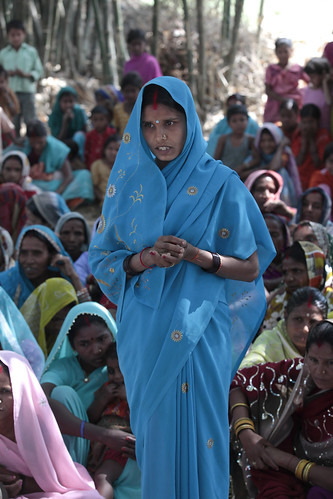This past week I traveled to Washington, D.C. to attend the Association for International Agriculture and Rural Development's (AIARD) Annual Conference. The theme for the 2012 conference was "Priorities for Inclusive Agricultural and Rural Development."
I was asked to serve as a panelist and was delighted to contribute my thoughts and provide examples of the progress Heifer has made on this topic. As I prepared my speech, I began to think about what information I wanted to share. I decided to focus on the importance of developing social capital for the poorest communities.
So, what does this mean, and how is Heifer incorporating it into our work?

The World Bank defines social capital as "institutions, relationships, and norms that shape the quality and quantity of a society's social interactions." Through the impact of social capital, Heifer project participants are able to have sustainable development and prosper economically.
Social capital is an important aspect of Heifer's Theory of Change, which is that the most vulnerable smallholder farmers, including women, can produce adequate food and surplus to feed their families, communities and the world, if their capacity is enhanced with the right inputs. Through social capital, Heifer project participants are able to organize and strengthen their existing groups/co-ops/alliances and enhance their values through Heifer's 12 Cornerstones. Social capital builds trust and hope and brings communities together. It connects similar people and then helps them understand and connect with other diverse groups.
So how does Heifer measure this in our projects? Our project indicators provide information on two types of social capital - structural and cognitive. Structural social capital is the composition and practice of formal and informal local-level institutions that serve as instruments of community development. Measuring structural social capital involves evaluating how effective these institutions are at helping communities make the changes they desire to improve their lives. Cognitive social capital includes shared norms, values, attitudes, and beliefs that predispose people toward mutually beneficial, collective action. Cognitive social capital is specifically measured through participants' perception.
Within the our projects, social capital can be seen by participants' participation in the community organizations and networks (formal and informal) and their inclusion of diverse groups and access to services. It is also evident through commitment to Passing on the Gift and Sharing and Caring - two of our Cornerstones.
To help and engage the poorest communities, we need to develop social capital, beginning where they are along the development spectrum. It's not crazy science - it is a demonstration of the connection humans need with each other.
Heifer has always been about working together and incorporating the values of a community. This is what has made us successful in the past and what will allow us to help even more families.